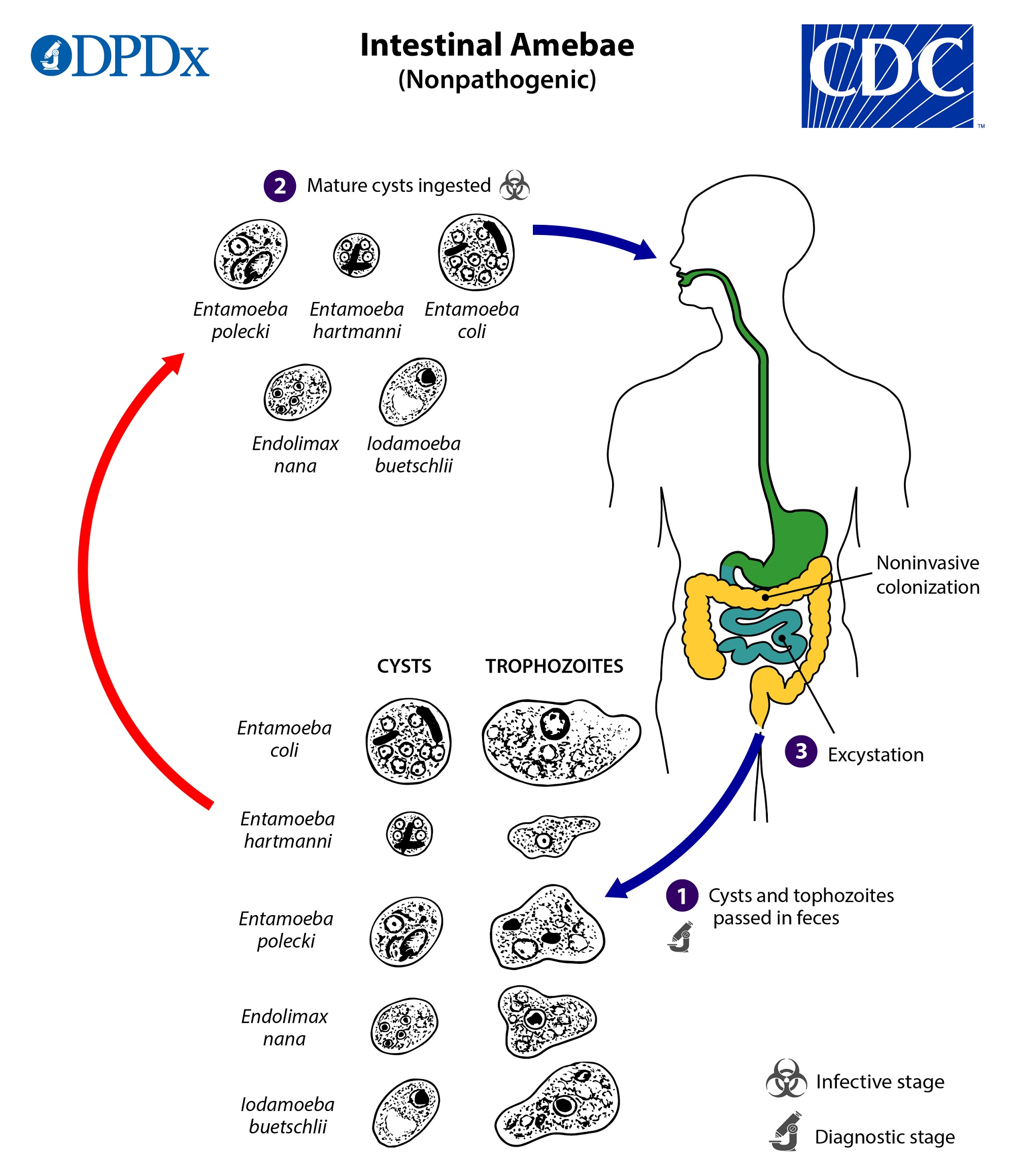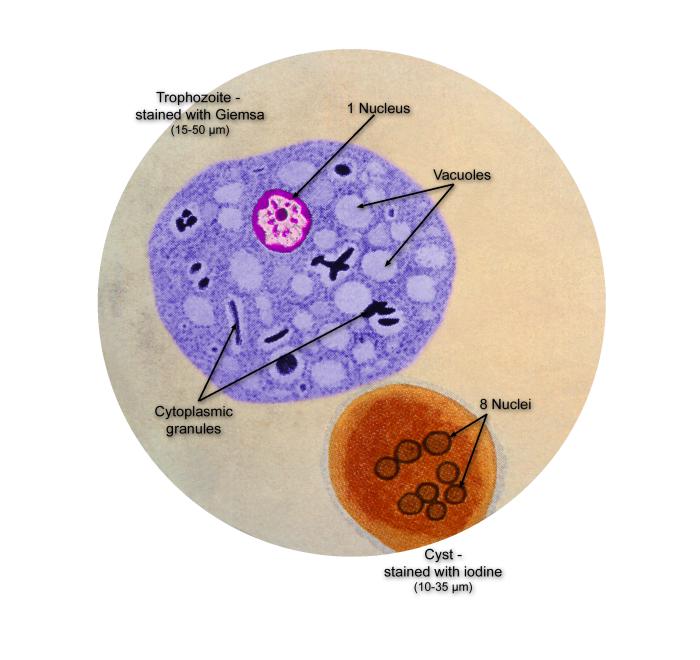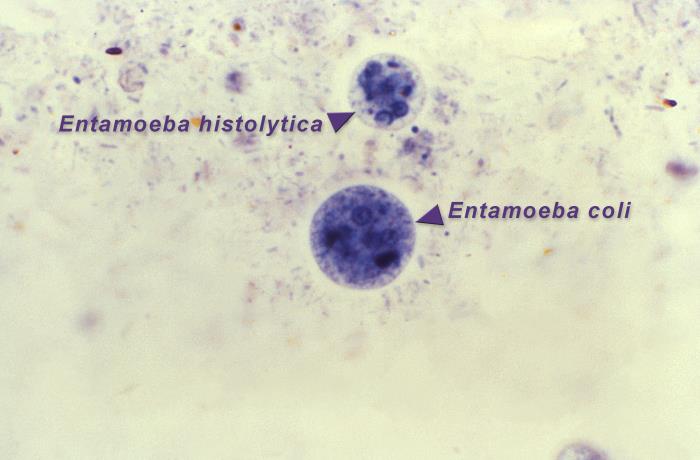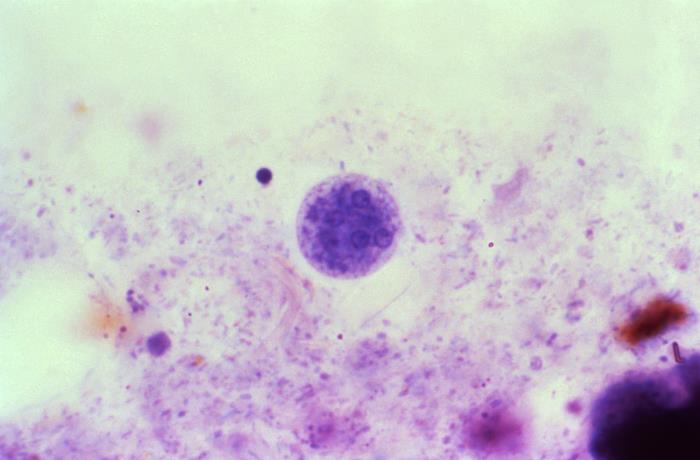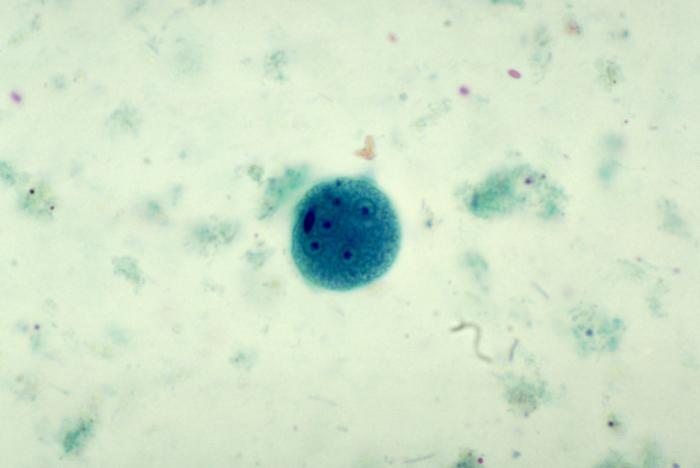[1]
Feng M,Pandey K,Yanagi T,Wang T,Putaporntip C,Jongwutiwes S,Cheng X,Sherchand JB,Pandey BD,Tachibana H, Prevalence and genotypic diversity of Entamoeba species in inhabitants in Kathmandu, Nepal. Parasitology research. 2018 Aug;
[PubMed PMID: 29808233]
[3]
Pinilla AE,López MC,Viasus DF, [History of the Entamoeba histolytica protozoan]. Revista medica de Chile. 2008 Jan;
[PubMed PMID: 18483662]
[5]
Jones TPW,Hart JD,Kalua K,Bailey RL, A prevalence survey of enteral parasites in preschool children in the Mangochi District of Malawi. BMC infectious diseases. 2019 Oct 11;
[PubMed PMID: 31604429]
Level 3 (low-level) evidence
[6]
Kappus KK,Juranek DD,Roberts JM, Results of testing for intestinal parasites by state diagnostic laboratories, United States, 1987. MMWR. CDC surveillance summaries : Morbidity and mortality weekly report. CDC surveillance summaries. 1991 Dec
[PubMed PMID: 1779956]
[7]
Kappus KD,Lundgren RG Jr,Juranek DD,Roberts JM,Spencer HC, Intestinal parasitism in the United States: update on a continuing problem. The American journal of tropical medicine and hygiene. 1994 Jun
[PubMed PMID: 8024063]
[8]
Norouzi P,Mohaghegh MA,Ghorbani M,Mirzaii M,Abolhassani M,Mirbadie SR, Investigating the prevalence of intestinal parasites with an emphasis on Strongyloides stercoralis infection in hospitalized patients: a regional report from Iran. Annals of parasitology. 2020
[PubMed PMID: 33128862]
[9]
Histochemical and histopathologic studies of alveolar mucosa under complete dentures., Razek MK,Shaaban NA,, The Journal of prosthetic dentistry, 1978 Jan
[PubMed PMID: 32099570]
[10]
A histologic evaluation of tissue response to three currently used temporary acrylic resin crowns., MacEntee MI,Bartlett SO,Loadholt CB,, The Journal of prosthetic dentistry, 1978 Jan
[PubMed PMID: 33082808]
[11]
Articulator adjustments using the transfer vise., Tradowsky M,, The Journal of prosthetic dentistry, 1978 Jan
[PubMed PMID: 31906872]
[12]
Tanyuksel M,Yilmaz H,Ulukanligil M,Araz E,Cicek M,Koru O,Tas Z,Petri WA Jr, Comparison of two methods (microscopy and enzyme-linked immunosorbent assay) for the diagnosis of amebiasis. Experimental parasitology. 2005 Jul
[PubMed PMID: 15955332]
[13]
Dhanabal J,Selvadoss PP,Muthuswamy K, Comparative study of the prevalence of intestinal parasites in low socioeconomic areas from South chennai, India. Journal of parasitology research. 2014
[PubMed PMID: 24587897]
Level 2 (mid-level) evidence
[14]
Yousif Abd Elbagi Y,Abd Alla AB,Saad MBE, The relationship between Helicobacter pylori infection and intestinal parasites in individuals from Khartoum state, Sudan: a case-control study. F1000Research. 2019
[PubMed PMID: 32765829]
Level 2 (mid-level) evidence
[15]
The reproduction of skin color and texture in facial prostheses for Negro patients., Aina TO,Wright SM,Pullen-Warner E,, The Journal of prosthetic dentistry, 1978 Jan
[PubMed PMID: 32913632]
[16]
Using pantographic tracings to detect TMJ and muscle dysfunctions., Shields JM,Clayton JA,Sindledecker LD,, The Journal of prosthetic dentistry, 1978 Jan
[PubMed PMID: 33035233]
[17]
Hernández PC,Morales L,Chaparro-Olaya J,Sarmiento D,Jaramillo JF,Ordoñez GA,Cortés F,Sánchez LK, Intestinal parasitic infections and associated factors in children of three rural schools in Colombia. A cross-sectional study. PloS one. 2019
[PubMed PMID: 31291262]
Level 2 (mid-level) evidence
[18]
Panti-May JA,Zonta ML,Cociancic P,Barrientos-Medina RC,Machain-Williams C,Robles MR,Hernández-Betancourt SF, Occurrence of intestinal parasites in Mayan children from Yucatán, Mexico. Acta tropica. 2019 Jul
[PubMed PMID: 31022382]
[19]
Jacobsen KH,Ribeiro PS,Quist BK,Rydbeck BV, Prevalence of intestinal parasites in young Quichua children in the highlands of rural Ecuador. Journal of health, population, and nutrition. 2007 Dec
[PubMed PMID: 18402182]
[20]
Procedural problems in using the Denar pantograph as a transfer-bow., Beck DB,Kass CA,Knap FJ,, The Journal of prosthetic dentistry, 1978 Feb
[PubMed PMID: 32020333]
[21]
Practical considerations in iontophoresis of fluoride for desensitizing dentin., Gangarosa LP,Park NH,, The Journal of prosthetic dentistry, 1978 Feb
[PubMed PMID: 32074629]
[22]
El Bakri A,Hussein NM,Ibrahim ZA,Hasan H,AbuOdeh R, Intestinal Parasite Detection in Assorted Vegetables in the United Arab Emirates. Oman medical journal. 2020 May
[PubMed PMID: 32550016]
[23]
Fotedar R,Stark D,Beebe N,Marriott D,Ellis J,Harkness J, Laboratory diagnostic techniques for Entamoeba species. Clinical microbiology reviews. 2007 Jul;
[PubMed PMID: 17630338]
[24]
Trissl D,Martínez-Palomo A,de la Torre M,de la Hoz R,Pérez de Suárez E, Surface properties of Entamoeba: increased rates of human erythrocyte phagocytosis in pathogenic strains. The Journal of experimental medicine. 1978 Nov 1;
[PubMed PMID: 722237]
[29]
Verweij JJ,Laeijendecker D,Brienen EA,van Lieshout L,Polderman AM, Detection and identification of entamoeba species in stool samples by a reverse line hybridization assay. Journal of clinical microbiology. 2003 Nov;
[PubMed PMID: 14605136]
[30]
Gungoren B,Latipov R,Regallet G,Musabaev E, Effect of hygiene promotion on the risk of reinfection rate of intestinal parasites in children in rural Uzbekistan. Transactions of the Royal Society of Tropical Medicine and Hygiene. 2007 Jun
[PubMed PMID: 17418321]

